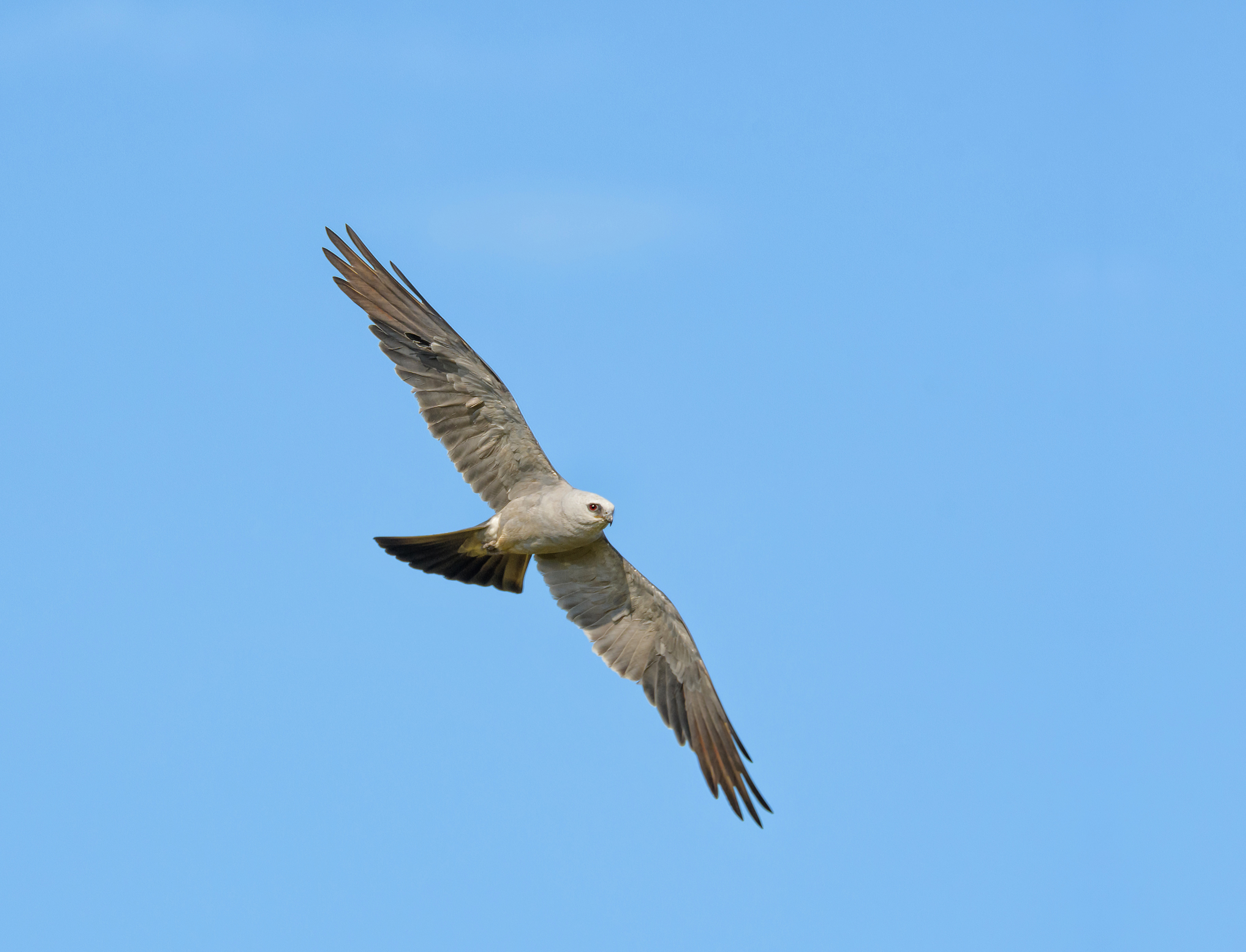Swooping kites on the campus of Fort Hays State University

8/10/22
By FHSU University Communications
HAYS, Kan - Each spring, scores of Mississippi Kites, graceful raptors the size and shape of a peregrine falcon, journey to Kansas from their winter homes in South America to nest and raise their young.
All eyes have been focused on the skies above the FHSU campus this spring and summer, alert to the presence of Mississippi Kites. One pair of kites has nested in a tree between Tebo Library and Malloy Hall on Campus Drive, vigorously defending the surrounding area of several hundred yards.
Statistics provided by the Department of Fishery and Wildlife Biology at Colorado State University indicate that instances of aggressive swoop attacks by kites occur at less than 20% of nesting sites. It turns out that at least one of our winged summer guests is among that 20% of more aggressive kites.
In response to ongoing aerial kite onslaughts, the university erected a 20-foot perimeter of barricades and bright yellow “caution” tape around the tree. The intention was to create a buffer to give the kites a safe space to roost.
Despite the best efforts of the FHSU Grounds team, a steady stream of first-hand accounts seem to indicate that at least one of the nesting kites-likely the male-remains bent on defending his nest and a good portion of central campus. Reports of close encounters of the kite kind include instances of the fast-moving raptor swooping low to buzz pedestrians. We have also received reports of individuals receiving thumps on the head from the knuckles of the bird's rolled talons.
Thus far, the university has received no reports of kite strikes that have led to cuts, bruises, bicycle crashes, or other injuries. Members of the FHSU Health and Wellness Services team suggest that if you experience an injury related to a kite strike, especially one that leaves a cut or contusion, you should seek medical attention to avoid possible infection.
Many Mississippi Kites spend their spring and summer months on the high plains. The birds perform a valuable service by removing insects that can harm crops. They feed primarily on insects like cicadas and grasshoppers. They occasionally supplement their diet with frogs, small birds, and mammals.
An expert flyer, the Mississippi kite often catches and consumes its insect prey in flight. The raptor is primarily gray with orange-red legs and feet, a pale light gray head, black wings tipped with a broad white patch, and deep red eyes. Yes, the bird has red eyes.
Mississippi kites are protected under the Migratory Bird Treaty Act of 1918, which means the birds, their eggs, and their offspring cannot be moved, captured, hunted, or killed. This includes the nest as well.
While humans pose little to no threat, there are other clear and present dangers to a nesting family of kites. These include strong Kansas winds and thunderstorms, raccoons, owls, and cats. Thus, a nesting colony of kites can be very protective of the area around their nests.
The best defenses against becoming the victim of a kite strike include avoiding the barricaded area on Campus Drive near Malloy Hall and the Tebo Library, carrying and deploying an umbrella when you are in or near the danger zone; and, of course, remembering to randomly flail your arms over your head whenever you see or sense the approach of an inbound kite. This last action should either scare off a diving kite or help it decide that you are just too silly to be of any threat to their brood.
According to the latest report from FHSU ornithologist and assistant professor of biology, Dr. Medhavi Ambardar, the fledglings are beginning to venture out of the nest. This may mean a lessening of the aggressive behavior in the days ahead.
The good news is that very soon, formations of 20-30 Mississippi Kites will again take flight and begin their southward migration back to South America.